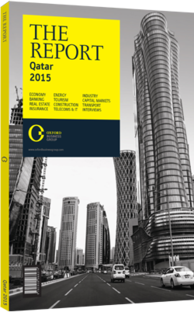Qatar's dominant fertiliser company adapts to a changing market
Located at the heart of a region that has seen double-digit growth in fertiliser production capacity in recent years, Qatar is now one of the international leaders in exports of these products, which remain vital to global food security. According to the figures from the Gulf Petrochemicals and Chemicals Association (GPCA), the GCC accounted for approximately one-quarter of global urea trade by volume in 2013 and 12% of global ammonia trade, with 90% of the region’s output exported. Qatar accounts for a considerable slice of this industry. Its leading fertiliser manufacturer, Qatar Fertiliser Company (QAFCO), is “now the largest exporter of urea in the world, with a 15% share of total supply”, QAFCO’s chairman, Abdulaziz bin Ahmed Al Malki, told OBG. The long-term future is likely to see demand for QAFCO’s products continue to rise. International Fertiliser Association figures suggest a global population of 9.3bn by 2050, requiring a 60% increase in food production.
HISTORY: QAFCO was founded in 1969 as a joint venture between the government and private shareholders, such as Norway’s Hydro, which had a 25% stake. The rationale was to develop a downstream industry for the local oil and gas sector – a sector that has grown considerably in size and range since. QAFCO is now 75% owned by Industries Qatar and 25% by Yara International, Hydro’s demerged fertiliser business and the world’s top producer of ammonia, nitrates and NPK (a blend of nitrogen, phosphorus and potassium). QAFCO’s first facility, QAFCO 1, began production in 1973, with five more trains being added in subsequent years. QAFCO 2 came on-line in 1979, followed by QAFCO 3 in 1997, QAFCO 4 in 2004, QAFCO 5 in 2011 and QAFCO 6 in 2012. Each train has two production units, one for ammonia and the other for urea, and all six have the capability built in to switch production from one product to the other, based on prevailing market conditions.
According to company figures, total production capacity is 10,241 tonnes per day (tpd) of ammonia and 14,531 tpd of urea. Figures quoted by Reuters in October 2014 put total annual output at 5.6m tonnes of urea and 3.7m tonnes of ammonia, with the firm recording a profit of around $1bn in 2013, despite volatility in international fertiliser prices. Its main export markets are South-east Asia, North America, Australasia and Southern Africa.
SUPPLIERS: QAFCO also has interests in a number of suppliers, including a stake in Gulf Formaldehyde Company (GFC), a joint venture with United Development Company, Qatar Industrial Manufacturing Company and asset management firm Amwal. GFC supplies urea formaldehyde, a vital ingredient in the production of urea. QAFCO sells via the combined Qatari petrochemicals, chemicals and fertilisers marketing company, Muntajat, to over 45 countries. Pricing remains an issue. Ammonia and urea headed in different directions in 2014, with urea prices falling and ammonia prices rising. The strong dollar – in which fertilisers are priced – may also impact global demand in 2015, along with generally lower agricultural prices and weakening growth.
CAPACITY TO CHANGE: There is also a surge in supply of ammonia and urea as new capacity comes online, with 30 ammonia projects and 25 urea projects moving forward in North America alone, according to agriculture industry publication Capital Press, leveraging on shale oil and gas. According to the GPCA, the GCC’s fertiliser capacity will pass the 66mtonnes-per-annum mark by 2018, thanks to a number of large-scale projects in the pipeline.
Given the circumstances, a rethink is under way. In October 2014 QAFCO announced that it would be switching more of its production to niche, environmentally friendly products, with the EU and other Western markets in mind. These would likely command lower volume but higher prices, offsetting some of the potential downside in mainstream sales.
You have reached the limit of premium articles you can view for free.
Choose from the options below to purchase print or digital editions of our Reports. You can also purchase a website subscription giving you unlimited access to all of our Reports online for 12 months.
If you have already purchased this Report or have a website subscription, please login to continue.

